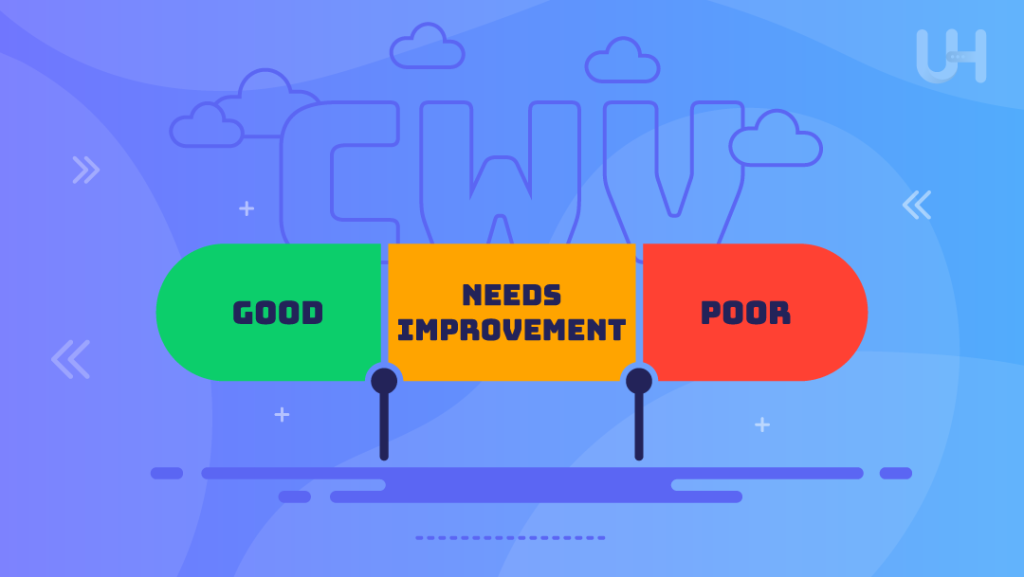
We all know that website performance is crucial for engaging users effectively. For this purpose, Google introduced Core Web Vitals to help us understand how well our websites perform. They look at three main things: how quickly your site loads (Largest Contentful Paint), how fast it responds when someone clicks on something (First Input Delay), and how steady everything looks while the page is loading (Cumulative Layout Shift).
Let’s discuss the importance of Core Web Vitals so you can make your website better for everyone who visits!
What Are Core Web Vitals?
Core Web Vitals are a set of specific factors that Google considers essential for evaluating the user experience provided by a website. They focus on three main aspects of web performance: loading speed, interactivity, and visual stability. These metrics are crucial because they directly impact how users perceive and interact with a website.
- Largest Contentful Paint (LCP): LCP measures how quickly the main content of a web page loads. It specifically looks at the time it takes for the largest image or text block to become visible to the user. A fast LCP ensures that users can see and engage with the most important part of your website without waiting too long.
- First Input Delay (FID): FID assesses the responsiveness of a website by measuring the time between a user’s first interaction with the page, such as clicking a button or tapping a link, and the browser’s response to that interaction. A low FID indicates that the website reacts quickly to user input, providing a smooth and seamless browsing experience.
- Cumulative Layout Shift (CLS): CLS evaluates the visual stability of a webpage by measuring how much the content shifts or moves unexpectedly during the loading process. This metric helps prevent frustrating experiences for users, especially on mobile devices, by ensuring that elements on the page remain in their expected positions.
By focusing on these Core Web Vitals, website owners and developers can identify areas for improvement and implement optimizations to enhance the overall user experience. Prioritizing these metrics can improve performance, user satisfaction, and search engine rankings.
Why Core Web Vitals Matter?
Understanding why Core Web Vitals matter is crucial for anyone involved in website development or online business. These metrics provide valuable insights into the user experience and directly impact website performance and success.
User Experience Enhancement
Optimizing Core Web Vitals directly translates to an improved user experience. Visitors are more likely to stay engaged and satisfied when your website loads quickly, responds promptly to user interactions, and maintains visual stability. Fast-loading pages ensure that users can access the content they need without frustrating delays. Smooth interactivity makes it easy for visitors to navigate your site and complete desired actions, such as filling out forms or making purchases. Visual stability prevents elements from shifting unexpectedly, reducing the likelihood of user frustration and enhancing overall satisfaction.
Search Engine Visibility
Core Web Vitals play a significant role in determining a website’s ranking in search engine results. Google has announced that these metrics will be incorporated into its search algorithms, emphasizing the importance of user experience in search rankings. Websites that prioritize Core Web Vitals are more likely to rank higher in search results, leading to increased visibility and organic traffic. By optimizing loading speed, interactivity, and visual stability, you can improve your website’s search engine performance and attract more visitors from organic search.
Ready to Elevate Your Website’s Performance?
Start optimizing your website today with Ultahost’s SEO VPS. Take the first step towards mastering Core Web Vitals and improving your website’s user experience and SEO performance. Get started now!
Business Impact
The user experience directly impacts key business metrics, including conversion rates, sales, and customer retention. Websites that provide a seamless and enjoyable browsing experience are more likely to convert visitors into new customers and retain existing customers.
By optimizing Core Web Vitals, you can create a positive impression on users, leading to increased conversions and revenue. You can also use tools to optimize conversion rates for your business. Conversely, poor performance in these areas can result in lost opportunities and damage to your brand’s reputation. Investing in website optimization is an investment in the long-term success and sustainability of your business.
Competitive Advantage
Lastly, an exceptional user experience can set your website apart from competitors. You can gain a competitive edge by prioritizing Core Web Vitals and establishing a compelling customer experience strategy. Websites that load quickly, respond smoothly, and maintain visual stability are more likely to attract and retain visitors. By delivering a superior user experience, you can differentiate your brand, build customer loyalty, and stay ahead of the competition.
Importance of Core Web Vitals in SEO

Core Web Vitals have emerged as a pivotal factor in shaping website visibility and relevance in search engine results pages (SERPs). Let’s explore why these metrics are indispensable for SEO success.
- Core Web Vitals focus on aspects of web performance critical for user experience, including loading speed, interactivity, and visual stability. Prioritizing these metrics not only ensures a seamless browsing experience for users but also signals to search engines that your website is user-friendly, potentially leading to higher rankings.
- Websites that prioritize user experience and meet these performance metrics are more likely to outperform competitors in search rankings. By focusing on these critical aspects of web performance, you can differentiate your website, attract more organic traffic, and gain a competitive edge in your industry.
- With the increasing prevalence of mobile devices, Google has transitioned to mobile-first indexing, prioritizing the mobile version of a website for indexing and ranking. Core Web Vitals are particularly crucial for mobile optimization, as they directly impact the mobile user experience. Prioritizing these metrics ensures that your website performs well on mobile devices, enhancing its visibility in mobile search results.
In short, Core Web Vitals play a vital role in SEO by improving user experience, influencing search engine rankings, accommodating mobile-first indexing, and providing a competitive advantage. By prioritizing these metrics in your SEO strategy, you can enhance your website’s visibility, attract more organic traffic, and achieve the goal of SEO success.
How to Optimize Your Website for Core Web Vitals?
Achieving optimal Core Web Vitals requires a combination of technical expertise, strategic planning, and continuous monitoring. Here’s a comprehensive guide to help you optimize your website for these critical performance metrics:
Largest Contentful Paint (LCP) Optimization: To improve LCP, focus on optimizing your website’s loading speed by minimizing your shared server response times, leveraging browser caching, and prioritizing critical resources. Compressing images, optimizing CSS and JavaScript files, and utilizing lazy loading techniques can also significantly reduce loading times.
First Input Delay (FID) Enhancement: To reduce FID, prioritize browser rendering and minimize JavaScript execution times. Avoid long tasks that block the main thread and delay user interactions. Optimize JavaScript code, defer non-essential scripts, and preload critical resources to improve responsiveness and interactivity.
Cumulative Layout Shift (CLS) Mitigation: To minimize CLS, ensure that your website’s layout remains stable during page loading by optimizing images and other media elements. Avoid dynamically inserted content that pushes existing content down, causing layout shifts. Moreover, implement proper element positioning and use CSS animations judiciously to prevent unexpected layout changes.
Content Delivery Network (CDN) Integration: Utilize a content delivery network (CDN) to distribute your website’s content across multiple servers worldwide. This reduces server response times and minimizes latency, resulting in faster loading speeds for users across different geographic locations. Moreover, choose a reliable CDN provider and configure caching settings to maximize performance benefits.
Performance Monitoring and Testing: Regularly monitor and analyze your website’s performance using tools like Google PageSpeed Insights, Lighthouse, and WebPageTest. Identify performance bottlenecks, prioritize optimization efforts, and track progress over time. Conduct user testing to gather feedback and insights on the user experience, allowing you to make data-driven optimization decisions.
Improve User Experience
Enhancing user experience (UX) goes hand in hand with optimizing Core Web Vitals. By prioritizing user-centric design and performance, you can create a website that not only meets but exceeds user expectations. Here are some strategies to improve user experience while optimizing for Core Web Vitals:
- Ensure that your website’s navigation is intuitive and easy to use. Clear menus, organized content categories, and prominent calls-to-action (CTAs) guide users to the information they need efficiently, reducing frustration and improving engagement.
- Design clean and visually appealing page layouts that prioritize readability and usability. Use whitespace effectively to separate content elements and create a visually balanced composition. Avoid cluttered designs that overwhelm users and distract from the main message.
- With the increasing prevalence of mobile browsing, it’s crucial to prioritize mobile responsiveness. Implement responsive design principles to ensure that your website adapts seamlessly to different screen sizes and devices.
- Simplify form submission processes to minimize friction and encourage user interaction. Use autofill options, clear error messages, and inline validation to guide users through the form completion process smoothly.
- Users expect immediate feedback when interacting with your website. Ensure that interactive elements, such as buttons and links, respond promptly to user input. Use loading spinners, progress indicators, or animations to indicate that an action is in progress, reducing uncertainty and improving perceived performance.
- Adhere to web accessibility standards (WCAG) to make your website accessible to users with disabilities. Provide alternative text for images, ensure proper contrast ratios for text and background colors, and use semantic HTML markup to enhance screen reader compatibility. Moreover, website accessibility improvements not only benefit users with disabilities but also contribute to a better overall user experience.
Conclusion
In conclusion, mastering Core Web Vitals is essential for optimizing your website’s performance and ensuring a seamless user experience. By focusing on loading speed, interactivity, and visual stability, you can create a website on a reliable web hosting that not only meets but exceeds user expectations.
Improving Core Web Vitals isn’t just about ranking higher in search results—it’s about prioritizing the needs and preferences of your audience. A fast-loading, responsive website with stable visuals and smooth interactivity not only attracts more visitors but also keeps them engaged and satisfied.
By prioritizing Core Web Vitals, you can create a website that not only ranks well in search results but also engages users, ultimately leading to long-term success.
Explore Ultahost’s fast WordPress hosting solutions for lightning-fast performance and seamless user experiences. Whether you’re optimizing for Core Web Vitals or looking to enhance your website’s speed and reliability, Ultahost has you covered.
FAQ
What are Core Web Vitals?
Core Web Vitals are a set of specific metrics that measure key aspects of web performance, including loading speed, interactivity, and visual stability.
Why are Core Web Vitals important for SEO?
Core Web Vitals are important for SEO because they directly influence how Google ranks and displays websites in search results.
How can I improve Core Web Vitals on my website?
To improve Core Web Vitals, focus on optimizing loading speed, interactivity, and visual stability. Strategies include optimizing images and other resources, minimizing JavaScript execution times, and ensuring responsive design across different devices.
How often should I monitor Core Web Vitals?
It’s recommended to monitor Core Web Vitals regularly, as website performance can change over time due to updates or changes in content.










